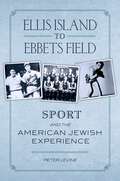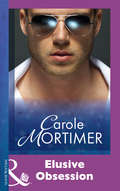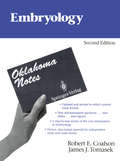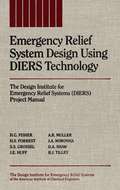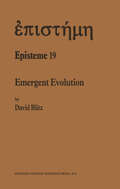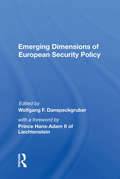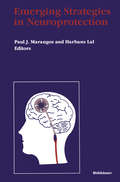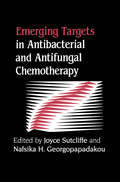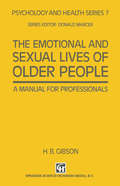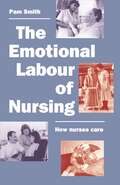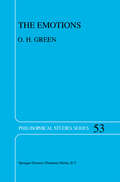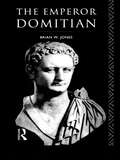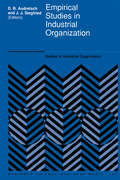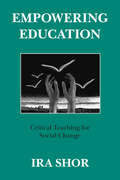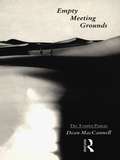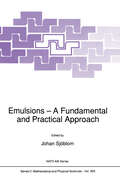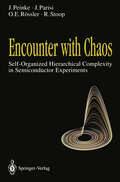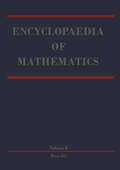- Table View
- List View
Ellis Island to Ebbets Field: Sport and the American Jewish Experience
by Peter LevineIn Ellis Island to Ebbets Field, Peter Levine vividly recounts the stories of Red Auerbach, Hank Greenberg, Moe Berg, Sid Luckman, Nat Holman, Benny Leonard, Barney Ross, Marty Glickman, and a host of others who became Jewish heroes and symbols of the difficult struggle for American success. From settlement houses and street corners, to Madison Square and Fenway Park, their experiences recall a time when Jewish males dominated sports like boxing and basketball, helping to smash stereotypes about Jewish weakness while instilling American Jews with a fierce pride in their strength and ability in the face of Nazi aggression, domestic anti-Semitism, and economic depression. Full of marvelous stories, anecdotes, and personalities, Ellis Island to Ebbets Field enhances our understanding of the Jewish-American experience as well as the struggles of other American minority groups.
Elusive Obsession (Mills And Boon Modern Ser.)
by Carole MortimerCarole Mortimer is one of Mills & Boon’s best loved Modern Romance authors. With nearly 200 books published and a career spanning 35 years, Mills & Boon are thrilled to present her complete works available to download for the very first time! Rediscover old favourites - and find new ones! - in this fabulous collection…
Embryology (Oklahoma Notes)
by Robert E. Coalson James J. TomasekThis book was prepared to present an integrated review of selected topics in Human Embryology. It is designed specifically for students who completed stan dard courses in the various anatomical disciplines and who wish to review the developmental history of the major organ systems. This book will provide medical students with a highly suitable review for Step 1 of the United States Medical Licensing Exam (USMLE, Step 1). R. E. Coalson J. J. Tomasek Acknowledgments We wish to acknowledge the invaluable assistance provided by our colleagues at the University of Oklahoma Health Sciences Center during preparation of this review. In particular, we would like to thank Ms. Nancy Halliday for proofread ing, Mr. Shawn Schlinke for preparation of the illustrations, Mr. Melville Vaughan for assistance with mounting the illustrations, and Ms. Trenda Tanner for assis tance with the typing. Contents Preface to the Oklahoma Notes . . . . . . . . . . . . . . . . . . . . . . . . . . . . . . . . . v Preface . . . . . . . . . . . . . . . . . . . . . . . . . . . . . . . . . . . . . . . . . . . . . . . . . . . . . . . vii Acknowledgments . . . . . . . . . . . . . . . . . . . . . . . . . . . . . . . . . . . . . . . . . . . . . viii 1. Gametogenesis . . . . . . . . . . . . . . . . . . . . . . . . . . . . . . . . . . . . . . . . . . . . . . . . 1 2. Female Reproductive Cycle . . . . . . . . . . . . . . . . . . . . . . . . . . . . . . . . . . . . 9 3. Fertilization and Pregnancy . . . . . . . . . . . . . . . . . . . . . . . . . . . . . . . . . . . . 12 4. Implantation and Formation of the Deciduae . . . . . . . . . . . . . . . . . . . . 15 5. Formation of the Placenta . . . . . . . . . . . . . . . . . . . . . . . . . . . . . . . . . . . . . . 18 6. Fetal Membranes and Umbilical Cord . . . . . . . . . . . . . . . . . . . . . . . . . . . 22 7. Early Development of the Conceptus 26 8. Development of General Body Form . . . . . . . . . . . . . . . . . . . . . . . . . . . . 32 9. Nervous System. . . . . . . . . . . . . . . . . . . . . . . . . . . . . . . . . . . . . . . . . . . . . . . 35 10. Musculoskeletal System . . . . . . . . . . . :. . . . . . . . . . . . . . . . . . . . . . . . . . . . 46 11. Integumentary System . . . . . . . . . . . . . . . . . . . . . . . . . . . . . . . . . . . . . . . . . 57 12. Oral Cavity and Development of the Branchial Apparatus . . . . . . . . 62 13. Differentiation of the Branchial Apparatus . . . . . . . . . . . . . . . . . . . . . . . 66 14. Face and Palate . . . . . . . . . . . . . . . . . . . . . . . . . . . . . . . . . . . . . . . . . . . . . . . 72 15. Digestive System and Mesenteries . . . . . . . . . . . . . . . . . . . . . . . . . . . . . . 78 16. Diaphragm and Body Cavities . . . . . . . . . . . . . . . . . . . . . . . . . . . . . . . . . . 86 17. Respiratory System . . . . . . . . . . . . . . . . . . . . . . . . . . . . . . . . . . . . . . . . . . . .
Emergency Relief System Design Using DIERS Technology: The Design Institute for Emergency Relief Systems (DIERS) Project Manual
by H. G. Fisher H. S. Forrest Stanley S. Grossel J. E. Huff A. R. Muller J. A. Noronha D. A. Shaw B. J. TilleyOSHA (29 CFR 1910.119) has recognized AIChE/DIERS two-phase flow publications as examples of "good engineering practice" for process safety management of highly hazardous materials. The prediction of when two-phase flow venting will occur, and the applicability of various sizing methods for two-phase vapor-liquid flashing flow, is of particular interest when designing emergency relief systems to handle runaway reactions. This comprehensive sourcebook brings together a wealth of information on methods that can be used to safely size emergency relief systems for two-phase vapor-liquid flow for flashing or frozen, viscous or nonviscous fluids. Design methodologies are illustrated by selected sample problems. Written by industrial experts in the safety field, this book will be invaluable to those charged with operating, designing, or managing today's and tomorrow's chemical process industry facilities.
Emergent Evolution: Qualitative Novelty and the Levels of Reality (Episteme #19)
by David BlitzEmergent evolution combines three separate but related claims, whose background, origin, and development I trace in this work: firstly, that evolution is a universal process of change, one which is productive of qualitative novelties; secondly, that qualitative novelty is the emergence in a system of a property not possessed by any of its parts; and thirdly, that reality can be analyzed into levels, each consisting of systems characterized by significant emergent properties. In part one I consider the background to emergence in the 19th century discussion of the philosophy of evolution among its leading exponents in England - Charles Darwin, Herbert Spencer, T. H. Huxley, Alfred Russel Wallace, and G. J. Romanes. Unlike the scientific aspect of the debate which aimed to determine the factors and causal mechanism of biological evolution, this aspect of the debate centered on more general problems which form what I call the "philosophical framework for evolutionary theory." This considers the status of continuity and discontinuity in evolution, the role of qualitative and quantitative factors in change, the relation between the organic and the inorganic, the relation between the natural and the supernatural, the mind-body problem, and the scope of evolution, including its extension to ethics and morals.
Emerging Dimensions Of European Security Policy
by Wolfgang F. DanspeckgruberThis book represents an overview of European security affairs as of 1989–1990. It deals with fundamental theoretical and political-strategic considerations; looks at arms-control developments; and examines European defense economies and military industrial capabilities of U.S. .
Emerging Dimensions Of European Security Policy
by Wolfgang F. DanspeckgruberThis book represents an overview of European security affairs as of 1989–1990. It deals with fundamental theoretical and political-strategic considerations; looks at arms-control developments; and examines European defense economies and military industrial capabilities of U.S. .
Emerging Strategies in Neuroprotection: Advances In Neuroprotection (Advances in Neuroprotection #22)
by Manangos LalSOLOMON H. SNYDER Receptor Research Reaches Neurology: Relevance to Neurodegenerative Diseases and Stroke President George Bush has heralded the 1990s as the decade of the brain, based largely on the rapid escalation of advances in the molecular neuro sciences and the likelihood that these will bear therapeutic fruit before the turn of the century. There is little doubt that the 1970s and 1980s have witnessed more remarkable advances in the molecular neurosciences than all of the preceding hundred years. Identification of receptor sites for drugs and neurotransmitters along with simple, sensitive, and specific means of monitoring them has made it possible to elucidate the mechanism of action for many known drugs and to identify new chemical entities as potential therapeutic agents. At the same time, the numbers of distinct neurotrans mitters have multiplied. Prior to 1970 only the biogenic amines were well accepted as transmitters. The early 1970s witnessed the gradual acceptance of amino acids as major excitatory and inhibitory neurotransmitters. Identification of opiate receptors and the subsequent identification of the enkephalins as their endogenous ligands led to an appreciation of peptides as putative transmitters and the accumulation of as many as a hundred neuropeptides by the decade's end. In the 1980s the revolutions of molecular biology have been applied aggressively to the neurosciences with molecular cloning for neuropeptide precursors, many important neurochemical en zymes, and receptors for numerous transmitters.
Emerging Targets in Antibacterial and Antifungal Chemotherapy
by Joyce Sutcliffe Nafsika GeorgopapadakouEmerging Targets in Antibacterial and Antifungal Chemotherapy offers constructive ideas to researchers that could lead to the discovery of entirely new classes of drugs. The authors emphasize new topics rather than review work on known antibacterials and antifungals, and identify new targets--either the rate-limiting component of a biochemical pathway or a component of the pathway that is susceptible to a ``screening'' or ``rational drug design'' approach. Each chapter reviews the biochemical pathway and its place in the cellular scheme in order to place the target in perspective. The authors, a mixture of academic researchers and drug-discovery investigators in pharmaceutical companies, also extend these theoretical concerns into practical applications and suggest useful screening methodologies. The importance of this subject area is demonstrated by the increasing number of papers in the literature that point to potential targets and screening methodologies for new antibacterials. This book also deals with antifungals, investigating the inherent limitations in existing antifungals (many of which are extremely toxic or have only limited efficacy), and pointing to major developments in the discovery of novel antifungals. Emerging Targets in Antibacterial and Antifungal Chemotherapy will be of interest to professional microbiologists, biochemists, and cell biologists in both academic and industrial laboratories.
Emily (Kirov Saga #3)
by Cynthia Harrod-EaglesA dramatic love story set against the background of the Great War and the Russian Revolution . . .Emily Paget, poor relation of an earl, shocks her family with her determination to earn her own living, rather than suffer the tedium of a respectable marriage. Whisked off to St Petersburg by her eccentric Russian grandmother, Emily finds the freedom she craves amongst the drawing-room revolutionaries. She also falls passionately in love for the first time, never dreaming how close they are to real revolution.When it comes, bloody and brutal, Emily's courage is tested to the full. Only she can save something from the wreck and bring the last of her family safe out of Russia. But she must leave behind the man she loves, not knowing even if he is alive or dead.
The Emotional and Sexual Lives of Older People: A Manual for Professionals (pdf) (Psychology and Health Series #7)
by H. B. GibsonThe Emotional Labour of Nursing: Its Impact on Interpersonal Relations, Management and Educational Environment
by Pam SmithThis stimulating and original study is written for nurses, midwives, health visitors and others, such as teachers, social workers and managers engaged in 'caring'. It will interest a variety of students, not only of nursing, but also of women's studies and sociology.The research on which this book is based shows the importance of the charge nurse or ward sister in making emotional style in which it was given, and that nurses felt better able to care for patients and colleagues when their learning environment was emotionally supportive.
The Emotions: A Philosophical Theory (Philosophical Studies Series #53)
by O.H GreenPhilosophical theories of emotions, and to an extent some theories of scientific psychology, represent attempts to capture the essence of emotions basically as they are conceived in common sense psychology. Although there are problems, the success of explanations of our behavior in terms of believes, desires and emotions creates a presumption that, at some level of abstraction, they reflect important elements in our psychological nature. It is incumbent on a theory of emotions to provide an account of two salient facts about emotions as conceived in common sense psychology. As intentional states, emotions have representational and rational properties: emotions represent states of affairs; and they are rationally related to other mental representations, figure in rational explanations of behavior, and are open to rational assessment. Emotions also have a close relationship to a range of non-intentional phenomena: in typical cases, emotions involve physiological changes, usually associated with the activation of the autonomic nervous system, which are proprioceptively experienced; and they often involve behavioral tendencies, as well.
The Emperor Domitian
by Brian JonesDomitian, Emperor of Rome AD 81-96, has traditionally been portrayed as a tyrant, and his later years on the throne as a `reign of terror'. Brian Jones' biography of the emperor, the first ever in English, offers a more balanced interpretation of the life of Domitian, arguing that his foreign policy was realistic, his economic programme rigorously efficient and his supposed persecution of the early Christians non-existent.Central to an understanding of the emperor's policies, Brian Jones proposes, is his relationship with his court, rather than with the senate. Roamn historians will have to take account of this new biography which in part represents a rehabilitation of Domitian.
The Emperor Domitian
by Brian JonesDomitian, Emperor of Rome AD 81-96, has traditionally been portrayed as a tyrant, and his later years on the throne as a `reign of terror'. Brian Jones' biography of the emperor, the first ever in English, offers a more balanced interpretation of the life of Domitian, arguing that his foreign policy was realistic, his economic programme rigorously efficient and his supposed persecution of the early Christians non-existent.Central to an understanding of the emperor's policies, Brian Jones proposes, is his relationship with his court, rather than with the senate. Roamn historians will have to take account of this new biography which in part represents a rehabilitation of Domitian.
Empirical Studies in Industrial Organization: Essays in Honor of Leonard W. Weiss (Studies in Industrial Organization #16)
by John J. Siegfried David B. AudretschEmpirical Studies in Industrial Organization brings together leading scholars who present state-of-the-art research in the spirit of the structure-conduct-performance paradigm embodied in the work of Leonard W. Weiss. The individual chapters are generally empirically or public policy oriented. A number of them introduce new sources of data that, combined with the application of appropriate econometric techniques, enable new breakthroughs and insights on issues hotly debated in the industrial organization literature. For example, five of the chapters are devoted towards uncovering the link between market concentration and pricing behavior. While theoretical models have produced ambiguous predictions concerning the relationship between concentration and price these chapters, which span a number of different markets and situations, provide unequivocal evidence that a high level of market concentration tends to result in a higher level of prices. Three of the chapters explore the impact of market structure on production efficiency, and three other chapters focus on the role of industrial organization on public policy. Contributors include David B. Audretsch, Richard E. Caves, Mark J. Roberts, F.M. Scherer, John J. Siegfried and Hideki Yamawaki.
Empowering Education: Critical Teaching for Social Change
by Ira ShorIra Shor is a pioneer in the field of critical education who for over twenty years has been experimenting with learning methods. His work creatively adapts the ideas of Brazilian educator Paulo Freire for North American classrooms. In Empowering Education Shor offers a comprehensive theory and practice for critical pedagogy. For Shor, empowering education is a student-centered, critical and democratic pedagogy for studying any subject matter and for self and social change. It takes shape as a dialogue in which teachers and students mutually investigate everyday themes, social issues, and academic knowledge. Through dialogue and problem-posing, students become active agents of their learning. This book shows how students can develop as critical thinkers, inspired learners, skilled workers, and involved citizens. Shor carefully analyzes obstacles to and resources for empowering education, suggesting ways for teachers to transform traditional approaches into critical and democratic ones. He offers many examples and applications for the elementary grades through college and adult education.
Empowering Education: Critical Teaching for Social Change
by Ira ShorIra Shor is a pioneer in the field of critical education who for over twenty years has been experimenting with learning methods. His work creatively adapts the ideas of Brazilian educator Paulo Freire for North American classrooms. In Empowering Education Shor offers a comprehensive theory and practice for critical pedagogy. For Shor, empowering education is a student-centered, critical and democratic pedagogy for studying any subject matter and for self and social change. It takes shape as a dialogue in which teachers and students mutually investigate everyday themes, social issues, and academic knowledge. Through dialogue and problem-posing, students become active agents of their learning. This book shows how students can develop as critical thinkers, inspired learners, skilled workers, and involved citizens. Shor carefully analyzes obstacles to and resources for empowering education, suggesting ways for teachers to transform traditional approaches into critical and democratic ones. He offers many examples and applications for the elementary grades through college and adult education.
Empowering Education: Critical Teaching for Social Change
by Ira ShorIra Shor is a pioneer in the field of critical education who for over twenty years has been experimenting with learning methods. His work creatively adapts the ideas of Brazilian educator Paulo Freire for North American classrooms. In Empowering Education Shor offers a comprehensive theory and practice for critical pedagogy. For Shor, empowering education is a student-centered, critical and democratic pedagogy for studying any subject matter and for self and social change. It takes shape as a dialogue in which teachers and students mutually investigate everyday themes, social issues, and academic knowledge. Through dialogue and problem-posing, students become active agents of their learning. This book shows how students can develop as critical thinkers, inspired learners, skilled workers, and involved citizens. Shor carefully analyzes obstacles to and resources for empowering education, suggesting ways for teachers to transform traditional approaches into critical and democratic ones. He offers many examples and applications for the elementary grades through college and adult education.
Empowering Education: Critical Teaching for Social Change
by Ira ShorIra Shor is a pioneer in the field of critical education who for over twenty years has been experimenting with learning methods. His work creatively adapts the ideas of Brazilian educator Paulo Freire for North American classrooms. In Empowering Education Shor offers a comprehensive theory and practice for critical pedagogy. For Shor, empowering education is a student-centered, critical and democratic pedagogy for studying any subject matter and for self and social change. It takes shape as a dialogue in which teachers and students mutually investigate everyday themes, social issues, and academic knowledge. Through dialogue and problem-posing, students become active agents of their learning. This book shows how students can develop as critical thinkers, inspired learners, skilled workers, and involved citizens. Shor carefully analyzes obstacles to and resources for empowering education, suggesting ways for teachers to transform traditional approaches into critical and democratic ones. He offers many examples and applications for the elementary grades through college and adult education.
Empty Meeting Grounds: The Tourist Papers
by Dean MacCannellEmpty Meeting Grounds continues Dean MacCannell's search for the cultural subject that is about to emerge from the encounter of the ex-primitive and the post-modern. It contains fascinating chapters on `Cannibal Tours', `The Desire to be Postmodern', the Vietnam Memorial in Washington D.C., the Statue of Liberty Restoration Project and the urbanization of Yosemite Park.
Empty Meeting Grounds: The Tourist Papers
by Dean MacCannellEmpty Meeting Grounds continues Dean MacCannell's search for the cultural subject that is about to emerge from the encounter of the ex-primitive and the post-modern. It contains fascinating chapters on `Cannibal Tours', `The Desire to be Postmodern', the Vietnam Memorial in Washington D.C., the Statue of Liberty Restoration Project and the urbanization of Yosemite Park.
Emulsions: A Fundamental and Practical Approach (Nato Science Series C: #363)
by Johan SjöblomProceedings of the NATO Advanced Research Workshop, Bergen, Norway, June 24-25, 1991
Encounter with Chaos: Self-Organized Hierarchical Complexity in Semiconductor Experiments
by Joachim Peinke Jürgen Parisi Otto E. Rössler Ruedi StoopOur life is a highly nonlinear process. It starts with birth and ends with death; in between there are a lot of ups and downs. Quite often, we believe that stable and steady situations, probably easy to capture by linearization, are paradisiacal, but already after a short period of everyday routine we usually become bored and seek change, that is, nonlinearities. If we reflect for a while, we notice that our life and our perceptions are mainly determined by nonlinear phenomena, for example, events occurring suddenly and unexpectedly. One may be surprised by how long scientists tried to explain our world by models based on a linear ansatz. Due to the lack of typical nonlinear patterns, although everybody experienced nonlinearities, nobody could classify them and, thus,· study them further. The discoveries of the last few decades have finally provided access to the world of nonlinear phenomena and have initiated a unique inter disciplinary field of research: nonlinear science. In contrast to the general tendency of science to become more branched out and specialized as the result of any progress, nonlinear science has brought together many different disciplines. This has been motivated not only by the immense importance of nonlinearities for science, but also by the wonderful simplicity ohhe concepts. Models like the logistic map can be easily understood by high school students and have brought revolutionary new insights into our scientific under standing.
Encyclopaedia of Mathematics: Reaction-Diffusion Equation - Stirling Interpolation Formula (Encyclopaedia of Mathematics #8)
by Michiel HazewinkelThis ENCYCLOPAEDIA OF MATHEMATICS aims to be a reference work for all parts of mathe matics. It is a translation with updates and editorial comments of the Soviet Mathematical Encyclopaedia published by 'Soviet Encyclopaedia Publishing House' in five volumes in 1977-1985. The annotated translation consists of ten volumes including a special index volume. There are three kinds of articles in this ENCYCLOPAEDIA. First of all there are survey-type articles dealing with the various main directions in mathematics (where a rather fine subdivi sion has been used). The main requirement for these articles has been that they should give a reasonably complete up-to-date account of the current state of affairs in these areas and that they should be maximally accessible. On the whole, these articles should be understandable to mathematics students in their first specialization years, to graduates from other mathematical areas and, depending on the specific subject, to specialists in other domains of science, en gineers and teachers of mathematics. These articles treat their material at a fairly general level and aim to give an idea of the kind of problems, techniques and concepts involved in the area in question. They also contain background and motivation rather than precise statements of precise theorems with detailed definitions and technical details on how to carry out proofs and constructions. The second kind of article, of medium length, contains more detailed concrete problems, results and techniques.
